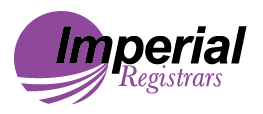A paper may be the principal means by which the board fulfills its oversight responsibilities and makes decisions affecting the trust’s future direction. The challenge for board paper writers is not to provide more data or information but to create better-informed directors. So the focus should be on quality, not quantity. Therefore, writers should be clear which of three types of board papers they are writing:
- Papers for decisions.
- Papers for discussions.
- Papers for assurances.
Board papers must clearly present all key information and facts and indicate any actions required. Board papers that don’t include all the necessary information in a form that is easy to read and understand can result in poor decision-making.
Here are some further thoughts to keep in mind.
- Keep the length of papers down so they can be easily read and assimilated. Three pages is about right.
- Keep the style clear and consistent. Use house style (corporate branding, template and size of font, preferred layout), include lists and bullet points, write in plain English, explain unfamiliar terms or technical language and decode any acronyms.
- Start with a statement of what is being asked of the directors, together with a description of who else has considered the paper and a short executive summary so the directors can grasp the key issues before studying them in greater detail.
- The level of detail should be determined by the information the director needs to make an informed decision. Exclude unnecessary detail.
- Include technical information or statistics in an appendix, with key points drawn out in the paper.
- Include relevant key metrics and information. The board should discuss and agree what information it expects when considering major capital investments and subsequent revenue implications, acquisitions and disposals, introducing or withdrawing services, entering into a joint venture, partnership or collaboration etc.
- Include an analysis of the risks of the proposal, especially on quality and patient safety, financials, staff and reputation, but also the environment etc.
- Consider the risks of not taking the action recommended in the paper.
- Give details of any internal sign-offs, approvals, discussions, external advice, views of key stakeholders which have informed the drafting of the paper and the recommendation.
- Give a clear and reasoned recommendation.
- Detail any further approvals required and likely timing e.g. approval of a regulator, joint venture partner or other related organisation.
- Provide the name of the writer and contact details.



